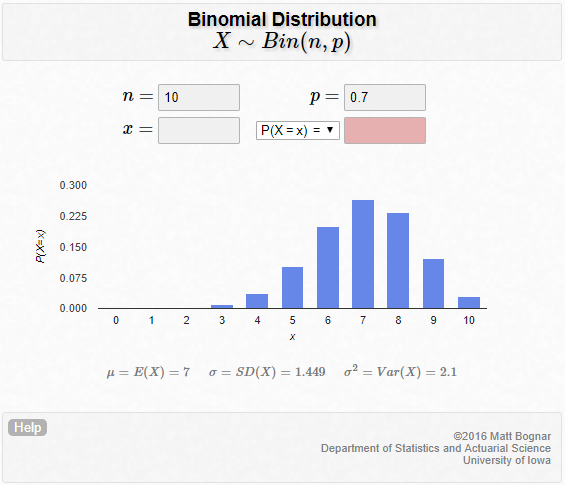Human proofreaders catch 70% of word errors. If a single essay contains 10 word errors, what is the distribution of the number of errors caught in this essay?
1 Answer
If
Explanation:
The wording of the question is a little confusing. There is a difference between "catching 70% of word errors" and "having a 70% chance of catching one error".
"Catching 70% of word errors" suggests a more accurate measure of the proofreaders' ability to catch errors, with minimal or no fluctuation in that 70% value. As such, it turns the question into a basic arithmetic problem, and the answer would be
#70% xx 10 " errors" = 7 " errors"# ,
with (nearly) 100% probability.
If, on the other hand, we interpret the question to mean "Human proofreaders have a 70% chance of catching a word error", then each individual error has a 70% chance of being spotted. This is more in line with a proper probability distribution, because it's like tossing a coin that's weighted to have a 70% chance of landing on heads. If we toss the coin 10 times, the most probable outcome is indeed 7 heads, but there is certainly a chance of tossing heads anywhere from 0 to 10 times.
If we let
#X" "~" Bin"(n=10, p=0.7)# ,
or often just
#X" "~" Bin"(10, 0.7)# .
Here is a graph of the distribution:


